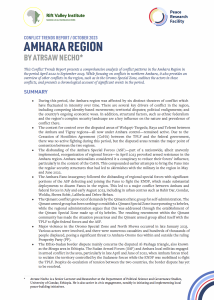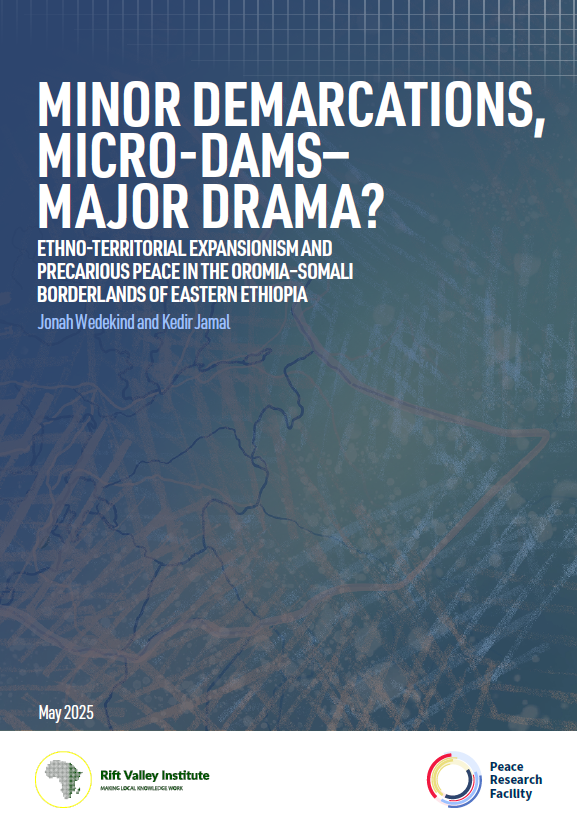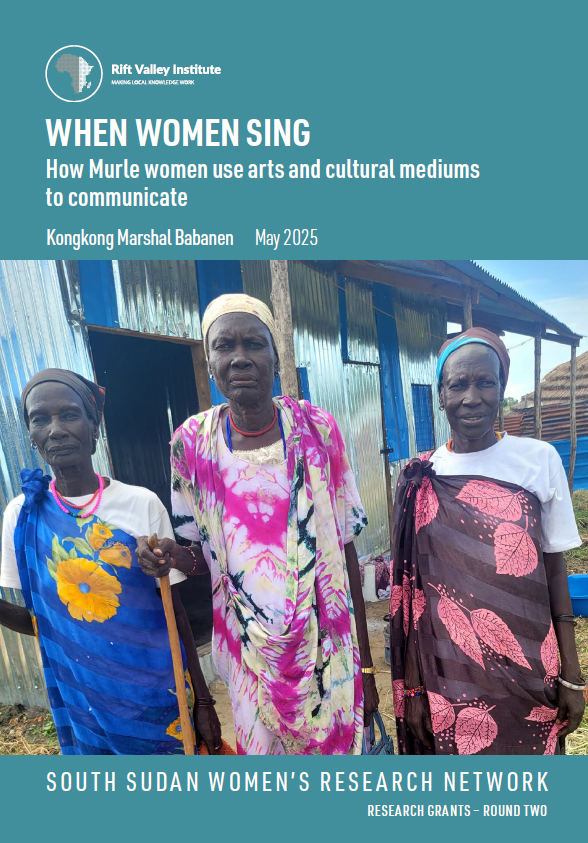This Conflict Trends Report presents a comprehensive analysis of conflict patterns in the Amhara Region in the period April 2022 to September 2023. While focusing on conflicts in northern Amhara, it also provides an overview of other conflicts in the region, such as in the Oromo Special Zone, outlines the actors in these conflicts, and presents a chronological account of significant events in the period.
SUMMARY
- During this period, the Amhara region was affected by six distinct theatres of conflict which have fluctuated in intensity over time. There are several key drivers of conflict in the region, including competing identity-based movements; territorial disputes; political realignments; and the country’s ongoing economic woes. In addition, structural factors, such as ethnic federalism and the region’s complex security landscape are a key influence on the nature and prevalence of conflict there.
- The contest for control over the disputed areas of Wolqayt-Tsegede, Raya and Telemt between the Amhara and Tigray regions—all now under Amhara control—remained active. Due to the Cessation of Hostilities Agreement (CoHA) between the TPLF and the federal government, there was no active fighting during this period, but the disputed areas remain the major point of contention between the two regions.
- The disbanding of the Amhara Special Forces (ASF)—part of a nationwide, albeit unevenly implemented, reorganization of regional forces—in April 2023 provoked armed resistance in the Amhara region. Amhara nationalists considered it a conspiracy to reduce their forces’ influence, particularly in the context of the CoHA. This compounded earlier attempts to bring the Fano into the regular security structures that had led to skirmishes with the military in the region in May and June 2022.
- The Amhara Fano insurgency followed the disbanding of regional special forces with significant portions of the ASF defecting and joining the Fano to fight the ENDF, which made substantial deployments to disarm Fanos in the region. This led to a major conflict between Amhara and federal forces in July and early August 2023, including in urban centres such as Bahir Dar, Gondar, Woldia, Shewa Robit, Lalibela and Debre Birhan.
- The Qimant conflict grew out of demands by the Qimant ethnic group for self-administration. The Qimant armed group has been seeking to establish a Qimant Special Zone incorporating 72 kebeles, while the regional administration argues that this was addressed through the establishment of the Qimant Special Zone made up of 69 kebeles. The resulting resentment within the Qimant community has made the situation precarious and the Qimant armed group allied itself with the TPLF to fight federal forces and the ASF.
- Major violence in the Oromo Special Zone and North Shewa occurred in late January 2023. Various actors were involved, and there were numerous casualties and hundreds of thousands of people displaced, posing a significant threat to Amhara-Oromo ties within and outside the ruling Prosperity Party (PP).
- The Ethio-Sudan border dispute mainly concerns the disputed Al-Fashaga triangle, also known as the Mezega area in Ethiopia. The Sudan Armed Forces (SAF) and Amhara local militias engaged in armed conflict in the area, particularly in late April and June of 2022, when Amhara forces tried to reclaim the territory controlled by the Sudanese forces while the ENDF was mobilized to fight the TPLF. Despite de-escalation of tension between the two countries, the border dispute has yet to be resolved.



